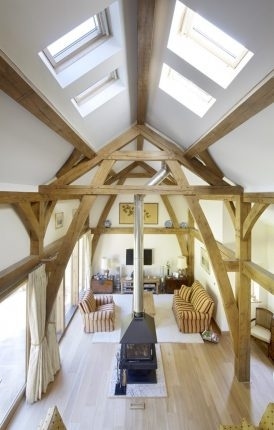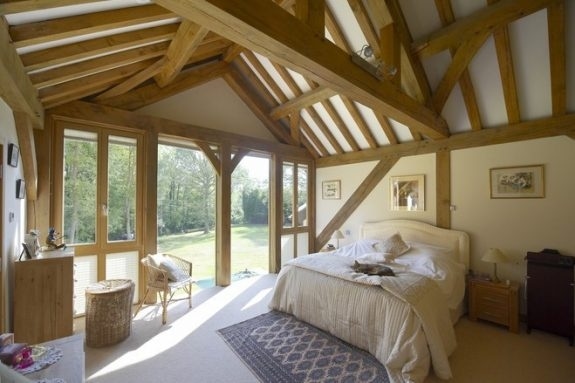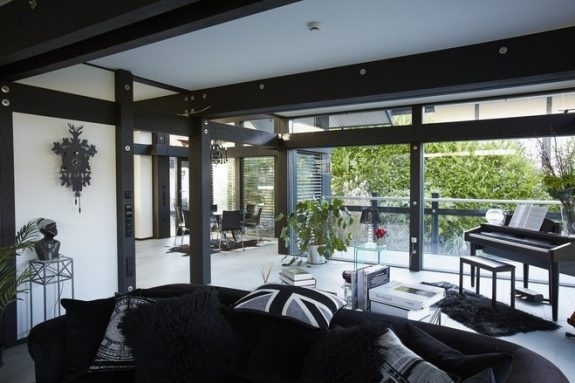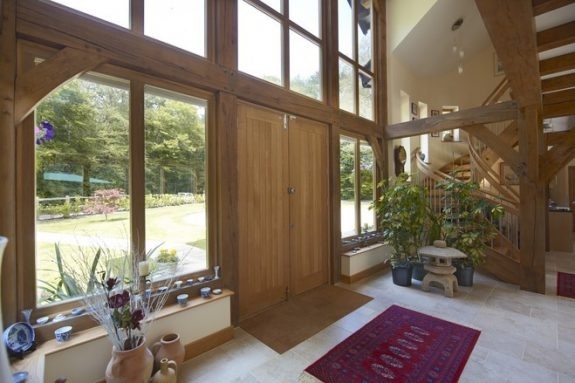
The Wall Street Journal tells MHProNews that buyers of luxury modular homes in Europe have many choices including spacious floor plans and high-end finishes. There is nothing to resemble a cookie cutter about these million-dollar homes. For example, in England, a 3,747-square-foot house in Winchester has three bedrooms, all with en-suite bathrooms, as well as a gym, a wine cellar and gardens on about a third of an acre. Initially, the house was built on a factory floor in Westerwald, Germany, by a company called Huf Haus.
Its owner, Vaughan Price, had seen a TV show about prefabricated homes and in 2005 decided to spend about $2 million, including cost of the land, for one of his own.“It’s like Lego,” Price, a successful businessman, said. “The neighbors were fascinated.”
To deliver Price’s house, local authorities closed roadways and diverted power lines as 15 trucks made a tight squeeze to reach the homesite. In the end, the vehicles got into the lane and craned the whole house into place in about three days.
Price said he had encountered difficulties getting a mortgage because local banks aren’t used to the idea of prefab houses. “Eventually we found a bank prepared to accept that the house would be of high a standard,” he said. Now, however, he is now selling the home, asking £1.6 million, or about $2.4 million, because he is relocating.
Prefab homes, long available in Germany, the U.S., Scandinavia and other countries, are relative newcomers in the United Kingdom, becoming popular only in the past 10 years, says Afra Bindewald, a business-development executive with Huf Haus. The company, which has been in the U.K. for 15 years, builds about 150 houses a year in Germany, Switzerland and the U.K.
Despite the cost and selection benefits, global distribution creates its own set of challenges. “Prefab houses are required to comply with local building codes,” explains Steven Harding, a spokesman with Baufritz, another German firm that makes prefab houses. “Owners are responsible for securing the building site and preparing the lot before trucks arrive. Since most design and décor decisions are made upfront, there is little flexibility for significant changes,” he explained. List prices for a Baufritz house are between $600,000 and $7.5 million.

However, before that could happen, Kieffer had to acquire a lot to build on, a particular challenge in this instance. He wanted to build on an area on the outskirts of Luxembourg’s business district, but close enough to be able to walk to his office.
It took him about three years to find it. “We saw this old house on the plot and wanted for a long time to buy it and then demolish it,” he said. “It wasn’t for sale, but then someone died, and those who inherited the house put it up for sale in an auction.” Kieffer paid $1.1 million for the land and another $1.69 million to build, move and assemble his house, which includes a workout room, as well as a sauna and library.
Peter Matthews and his wife, Susan, encountered another surprising hurdle to erecting a prefab home. In February 2007, they were about to knock down a 1970s bungalow on 1.34 acres in West Sussex, England, with plans to assemble a 3,500-square-foot prefab home. But before demolition began, surveyors discovered bat droppings on the roof of the house. “This meant we couldn’t demolish it because bats are protected species and had to wait for about seven months until they finished mating,” Matthews, a retired marine engineer, explained.

Eventually, though, the Matthews hired Oakwrights, a prefab company based in Herefordshire, to design and build the framework for their four-bedroom, open-plan home. The company builds about 80 houses each year, ranging from $300,000 to $3 million for oak-frame houses. Matthews said their home cost more than $1.5 million.
When the house was finished in October 2008, the council required the couple to put out six bat boxes costing about $75 apiece. “The stupid things have never been used for bats,” says Matthews. “Instead they’ve turned into expensive nests for birds.”
After six years in the home, the couple has decided to sell, saying it’s time to downsize. Their house is listed for $2.179 million. Rather than identifying that the home was prefabricated, potential buyers note the oak framing, which creates “the feel of a traditional oak barn,” Colin Sharp, the listing agent, said. ##
(Photo Credits: Wall Street Journal)

Article Submitted by Sandra Lane to – Daily Business News- MHProNews. –

























